SCHRACK Fluorescent Tubes

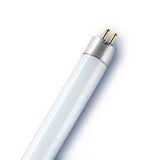

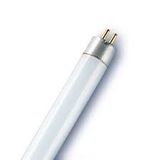

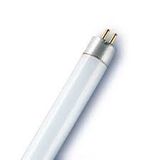
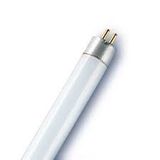
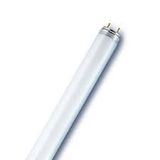
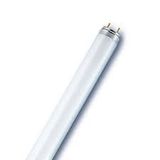




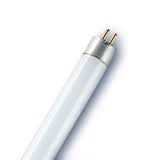
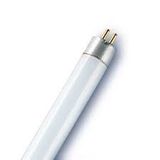



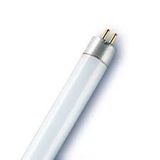

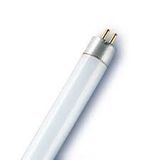


schrack fluorescent tubes performance and ballast pairing
For facilities still operating fluorescent infrastructure, these lamps deliver predictable lumen output, colour stability, and HF ballast compatibility. T8 types are optimized around 25 °C ambient; T5/T5 HO reach peak efficacy near 35 °C with enclosed fixtures or trunking. Pair with electronic HF ballasts for flicker-free light, high power factor (≥ 0.95), and extended electrode life; legacy magnetic gear requires correct starters and runs at higher system losses. Typical CRI is ≥ 80 with 3000 K, 4000 K, and 6500 K options; CRI 90 lines exist for inspection and retail tasks.
schrack linear fluorescent tubes sizes, wattages, and optics
Lengths and nominal powers follow IEC lamp families so inventories stay clean across buildings:
- T8 G13: 600 mm/18 W, 1200 mm/36 W, 1500 mm/58 W (HF versions often 17/32/51 W at similar lumen packs).
- T5 G5: 549 mm/24 W, 849 mm/39 W, 1149 mm/54 W; T5 HO 24/39/54 W for high-ceiling runs; T5 HE 14/21/28/35 W for office density.
Coatings include tri-phosphor for CRI 80 efficacy lines and multi-band blends for CRI 90. Prismatic louvers or micro-prismatic lenses in the luminaire handle glare (UGR) rather than the tube itself; keep this in mind when mixing optics across floors.
Technical specifications and standards
Electrical and photometric data align with IEC 60081 (legacy fluorescent lamps) and IEC 61347/60929 (control gear) on HF systems; EMC per EN 55015/EN 61547. Lumen maintenance typically L70 at 12–16 k h for T8 on magnetic gear and 18–24 k h on HF; T5/T5 HE/HO families commonly reach 20–30 k h on HF with proper switching regimes. Ambient window −20…+50 °C model-dependent; frequent switching shortens life unless the HF ballast includes warm-start. Mercury content is minimized and marked for end-of-life handling.
Applications and compatibility in ceilings and trunking
- Offices and schools: T5 HE in recessed/parabolic troffers to meet EN 12464-1 targets with low glare; this is the arena where buyers still reference schrack office lighting tubes in schedules for fleet continuity.
- Warehouses and aisles: T5 HO in continuous trunking for higher mounting heights; temperature profile in enclosed channels benefits T5.
- Utility areas and car parks: T8 in IP65 battens; HF ballasts reduce stroboscopic effects around rotating equipment.
Check lampholder temperature class (G5/G13) and end-cap clearances in sealed luminaires to avoid early blackening.
Emergency lighting and controls integration
Fluorescent bodies can host maintained/non-maintained kits with high-temperature NiMH cells; ensure lamp/ballast is listed for emergency operation and that electrodes are pre-heated. For presence/daylight controls, use HF ballasts with 1–10 V or DALI to limit cathode wear during dimming. Where circuits migrate to LED later, choose luminaires with gear trays that accept driver/LED boards on the same mechanical footprint.
Handling, service, and EHS
Use gloves and rigid tubes for transport to prevent tip cracks. At EoL, lamps must go to WEEE-compliant recycling due to mercury—store in closed sleeves and label containers. Blackened ends often indicate electrode depletion from frequent switching; review control strategy before simply increasing spare stock.
Selection criteria for B2B engineers
- Photometry: lumen pack vs mounting height; manage UGR via luminaire optics, not tube alone.
- Colour policy: CRI 80 for back-of-house; CRI 90 where colour rendition matters; keep SDCM ≤ 3 across adjacent spaces.
- Ballast regime: HF warm-start for frequent switching; verify 1–10 V/DALI if dimming is required.
- Environment: IP and temperature in trunking/battens; T5 near 35 °C, T8 near 25 °C for best efficacy.
- Lifecycle & logistics: align relamping cycles by building; stock common lengths only. When documents call out schrack fluorescent lamps, ensure the part numbers fix CRI/CCT so floors remain visually consistent.
Retrofit and phase-out planning for estates
Many regions are restricting general-purpose fluorescent supply. For risk-managed fleets, plan a staged swap of drivers/gear trays to LED while keeping appearance and UGR targets. Where immediate LED is not feasible, keep HF ballasts and specified tubes in limited strategic stock, and lock purchase specs (length, CCT, CRI, cathode regime) to avoid mixed ceilings.
Procurement notes and cross-category integration
Standardize by length and lumen class (e.g., T5 HE 21/28 W in offices; T5 HO 54 W in aisles; T8 36/58 W in utility). Include compatible starters only where magnetic gear persists. Tie luminaires, gear, and tubes into one line item so stores don’t split families. If a project later migrates, cross-reference to Schrack LED battens and panels for drop-in optical continuity—use “like-for-like” photometry from your calc files.
Advantages of working with Bankoflamps
You get project-specific pricing tied to room schedules, live EU stock visibility, and quick quotes—typically around an hour. Orders by EAN/MPN prevent variant drift; your portal shows lead times, shipment status, and downloadable price lists. Approved accounts can use post-payment up to 30 days. We consolidate partials and hold price-validity windows so phased relamping stays predictable. Our team checks ballast type, CCT/CRI policy, emergency kits, and IP/temperature constraints against your drawings so cartons arrive site-ready—no mismatched caps or optics.